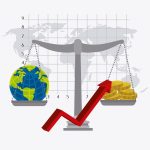Most people know us at FireDrum as being email marketing experts. We offer a leading platform in the email marketing industry and a variety of options for beginners and email experts alike. What a lot of people don’t know is that we also offer extended services that can help you build your brand and market your business beyond email.

That includes things like Pay Per Click campaign management, Search Engine Management and Optimization, and Web Application Development. One of the main extended services that FireDrum offers, which I am going to highlight today, is Website Design Services.
That’s right! FireDrum experts cannot only help you design a custom email template, we can help you design a custom website too.
Now, website design can encompass a large number of sub-services and specialized requests, so let’s focus our efforts on the main topic of this post: Website Redesign.
We have built hundreds of websites over the years here at FireDrum, but we have been getting increasingly large numbers of requests for website redesigns (as opposed to designing a site from scratch.) I can only speculate as to why that is, but we tend to work more with established businesses who are more likely to already have somewhat of a web presence, including a website.
At some point a lot of these and thousands of other business owners who have websites start to realize that their competitors sites are looking better and better these days, and they feel like they’re getting left behind. Web trends move pretty fast, and if you neglect your website for too long, you could end up years behind the relevant trends and your stats will plummet due to a poor user experience.
I don’t want that to happen to you (and I’m sure you don’t either!), so here are
5 Signs That It’s Time for A Website Redesign:
1. You missed the Responsive boat
Mobile Internet usage has been skyrocketing over the past few years, and that’s probably no surprise to you. For the first time in 2015, mobile media time has now surpassed desktop time.
There is no shortage of those statistics, but even with all of the compelling evidence, the majority of websites today are still not responsive.
Consumers are getting pickier by the minute and they expect a certain experience when they visit the website of a professional business. If that experience involves pinching, zooming, scrolling around, etc., you can bet they are going to move on pretty quick.
Over 20% of Google searches are now done on mobile devices.
Twenty percent, though, that’s not all that much. Why should that compel you to update your website?
There are over 3.5 billion searches every day on Google, which makes 20% a cool 700 million per day (at least).
So is a responsive website design worth your time and investment? Absolutely. No questions asked.
If your website is not mobile-friendly, this is your first sign that it’s time for a website facelift.
2. Your user experience is lacking
Websites used to be pretty straightforward. They were a way for people to find out what your business was about on the Internet. Simple. If you had a website in some shape or form, you were on the up and up.
Well, those prized one-way static mediums that used to be so great have evolved into a very rich and interactive user experience.
The success of your website is all hinging on one very important factor: how the user perceives it.
Experience represents a variety of things in this context. To get a better understanding of what user experience is all about, visit any website and ask yourself things like “Is this website easy to use? Is it enjoyable to use? Does it provide me with value?”
Whether you know it or not, you are asking these questions to yourself all the time when you visit websites, and the answers are the basis of your decisions on whether or not you will become a frequent visitor.
User experience is all about getting people to answer, “Yes” to those questions.
Explaining why user experience is necessary in today’s world almost seems pointless. It’s necessary because it identifies and deals with the needs of the user, enough said.
The important thing to understand is that user experience is going to look different for every website. It depends on how complex your systems are, the variety of products and services you offer, the amount of information a user will be looking for, and so many other factors.
It’s not a quick fix solution, but it is necessary, and if your website is lacking it, it’s another obvious sign that it’s time for a redesign.
3. It’s Slow
Website load times are a crucial factor to measure the performance of a website. It matters to Google and to your users, too.
The patience levels of users have been continuously decreasing over the years, and they are always looking for faster page downloads.
If your site is taking too long to load, a user will hit that back button with little to no hesitation. On to the next. There goes that opportunity.
The effect of a slow loading website will not only affect your sales, but it will affect whether or not a user chooses to return to your site. If the load time of your site negatively impacts that customer and causes them to be dissatisfied, they are likely to develop a negative perception of your company.
What causes your website to be slow?
That’s a loaded question. There are a variety of reasons that your website may be slow, and it will take some delving in to your site to figure it out.
Some of the most common reasons are:
• Unoptimized images
• Too much flash
• Inefficient / bulky code
• No HTTP compression
• Images without caching information
Regardless of the reason, your site needs to be loading within the optimal time in order to avoid impacting user experience in a negative way.
Try running your site through a speed test like this to see how you measure up.
How fast should your website load?
Akamai claims that 75% of people asked would not return to websites that took longer than four seconds to load.
4. You’re not generating leads or sales
Let’s revisit the reason why you are in business in the first place. It’s great to enjoy what you do, and having an attractive website is good too, but you’re in business to generate revenue.
If your website is not helping you do that by generating leads and sales, there is a disconnect.
You may not realize this if your website has been under-performing for you, but your website can be your biggest lead-generation tool that you have. It’s a 24/7 salesperson.
It’s easy to get caught up in the looks of a website and only focus on the “pretty face”, but your website should also have sustenance and a purpose.
Your site is not just a means to give out contact information, that’s what business cards are for.
A website can provide value and information to a user which is the jumping off point for an on-going relationship, and the opportunity to capture lead information.
Leads bring meetings, meetings bring sales, and sales bring more work. It’s a constant cycle that has to happen for any business to survive.
You wouldn’t pay a salesman, who didn’t generate new leads and schedule more meetings, would you?
Then why pay a website that just sites there an looks pretty?
5. You’re embarrassed by it
Okay, I’m not saying that every website that qualifies for a redesign will fall in to this category, but you know who you are.
We recently completed a website redesign for a client because their newest team member was ashamed to pull up the business’ website in client meetings. He felt that it was actually hurting his credibility.
Yikes.
As a general rule, you should be proud to refer people to your website. It should help your business.
Furthermore, it should be attracting new clients all on it’s own with out your referral.
Bottom-line: your website should always be providing a benefit to your business.
Do any of these apply to your website?
• Your website is so old and outdated that potential customers are actually deterred from doing business with you
• Customers are unable to contact you or are given misinformation because the website has outdated info
• Customers cannot complete transactions because your eCommerce site does not work properly
Having a strong online presence is no longer optional. If you are uncomfortable referring people to your website, it’s really time to consider a redesign.
Website projects can be a lot to take on but we're always here to help you if you have questions. We manage all the hard stuff when it comes to redesigning a website, so you can focus on doing what you do best.
If any of the above points has made you question your website and you're thinking it might be time for a redesign, feel free to give us a call or drop us a line.







